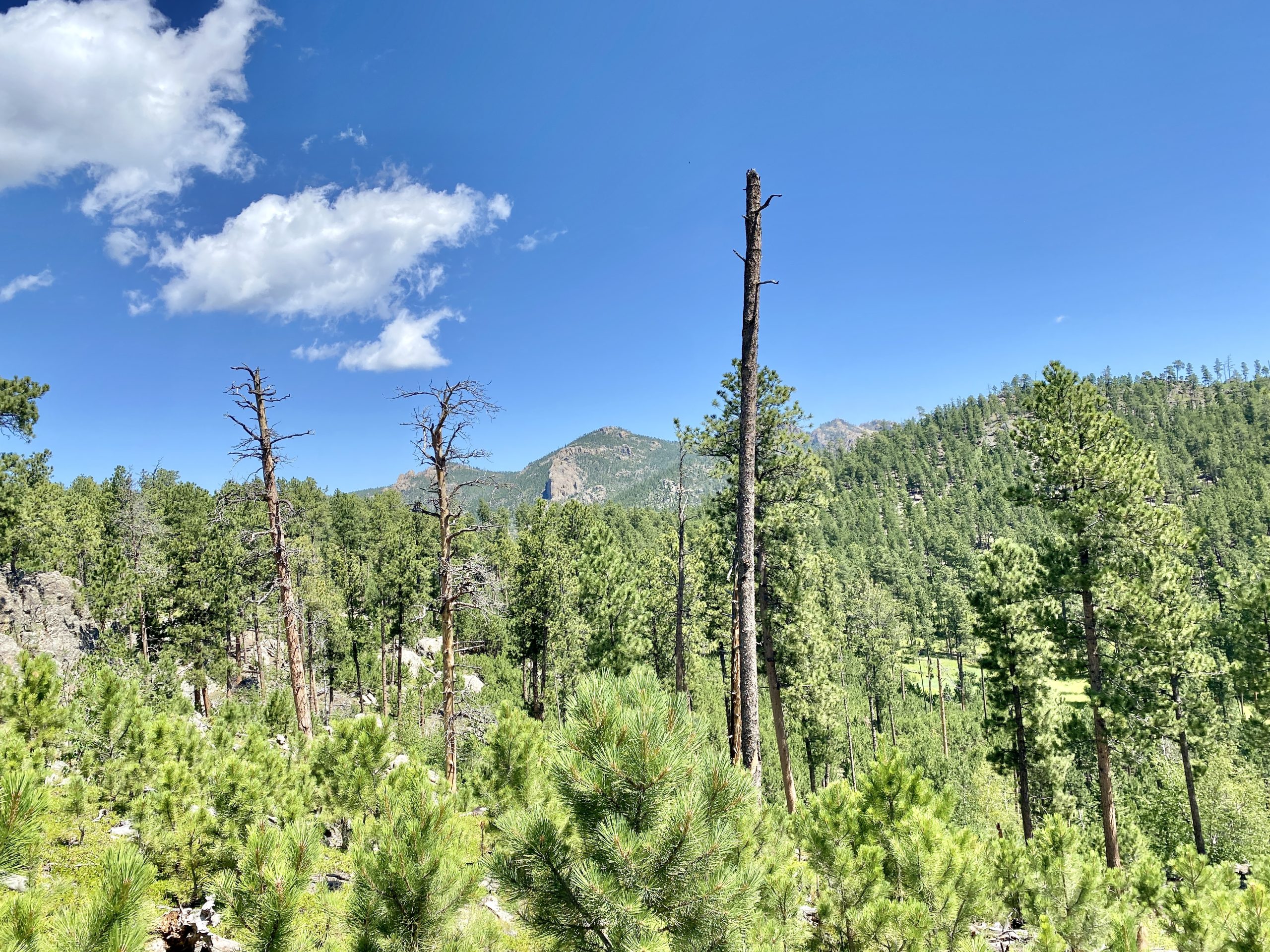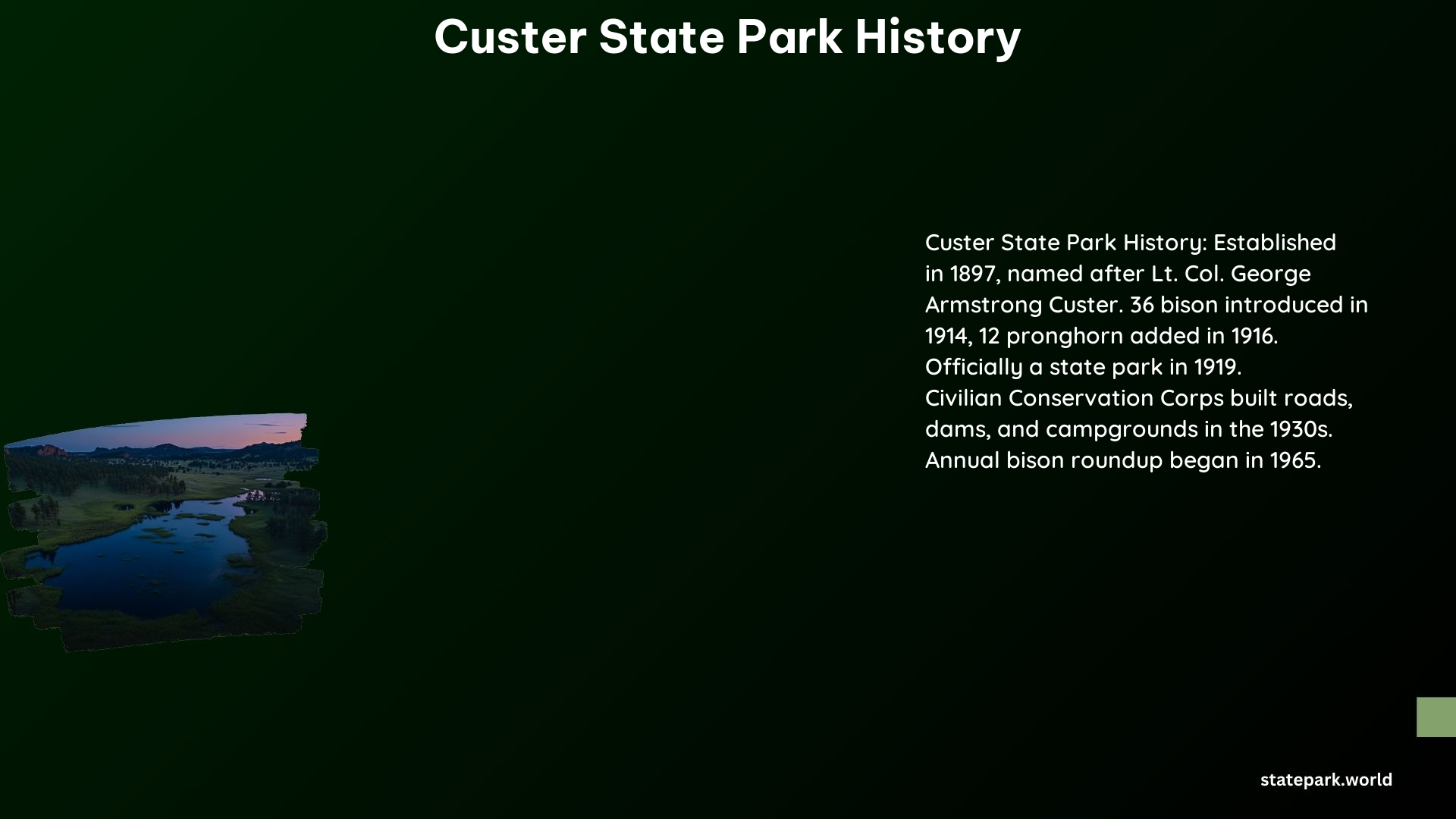Custer State Park, nestled in the heart of the Black Hills of South Dakota, boasts a rich and fascinating history that spans over a century. From its early beginnings as a state forest to its transformation into one of the largest and most beloved state parks in the United States, the story of Custer State Park is a captivating tale of conservation, wildlife preservation, and recreational development.
Early Beginnings: From School Lands to State Forest

In 1897, the United States Congress granted South Dakota sections 16 and 36 in every township as school lands. However, managing these scattered lands within the Black Hills timberland proved to be a challenging task. This led to negotiations for a land exchange, which ultimately shaped the future of Custer State Park.
Land Exchange and Designation as Custer State Forest

In 1910, South Dakota relinquished its rights to over 60,000 acres of timberland within the Black Hills Forest Reserve in exchange for nearly 50,000 acres of forest in Custer County and about 12,000 acres in Harding County. This land was then designated as Custer State Forest in 1912, setting the stage for the park’s transformation.
Conversion to Custer State Park
The pivotal moment in Custer State Park’s history came in 1919 when Governor Peter Norbeck played a crucial role in prompting the State Legislature to convert Custer State Forest into Custer State Park. This conversion, which took place on July 1, 1919, marked the beginning of a new era for the park.
Wildlife and Infrastructure Development
In 1914, 36 bison were introduced to the park from Scotty Philip’s herd near Pierre, laying the foundation for the park’s iconic free-roaming bison herd. The 1920s saw rapid infrastructure development, with the construction of the Needles Highway, the State Game Lodge, and the introduction of other wildlife species like pronghorn and Rocky Mountain bighorn sheep.
Presidential Visits
Custer State Park has played host to several notable figures throughout its history. In 1927, President Calvin Coolidge spent the summer at the State Game Lodge, which became known as the “Summer White House.” Years later, in 1953, President Dwight D. Eisenhower also visited the park.
Civilian Conservation Corps
During the Great Depression, the Civilian Conservation Corps (CCC) set up camps within the park and undertook numerous projects, including the construction of roads, buildings, and other infrastructure. One of their notable achievements was the completion of the Iron Mountain Road, which connected the State Game Lodge to Mount Rushmore National Monument.
Modern Developments
In recent years, Custer State Park has continued to evolve and adapt to the needs of its visitors. In 2016, a new Visitor Center was unveiled, and the park continues to host events like the annual Buffalo Roundup, which helps manage the bison population.
Today, Custer State Park stands as a testament to the enduring spirit of conservation and recreation. With its vast landscapes, diverse wildlife, and rich history, it remains a beloved destination for visitors from around the world.
References:
- https://southdakotaccc.org/custer-state-park/architecture.php
- https://gfp.sd.gov/userdocs/docs/TatankaNewspaper2019_lowres.pdf
- https://www.britannica.com/place/Custer-State-Park
- https://gfp.sd.gov/csp-history/
- https://en.wikipedia.org/wiki/Custer_State_Park
